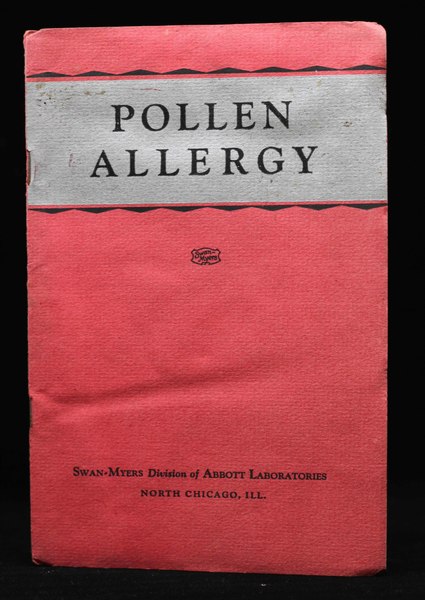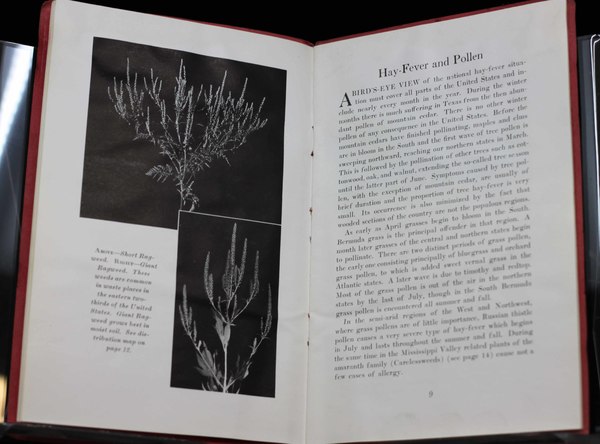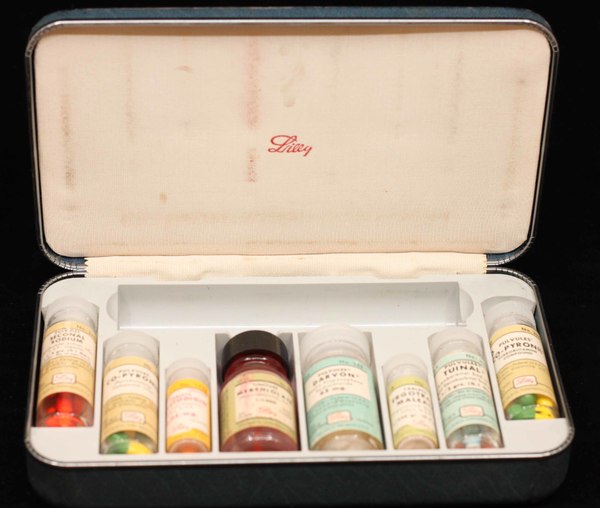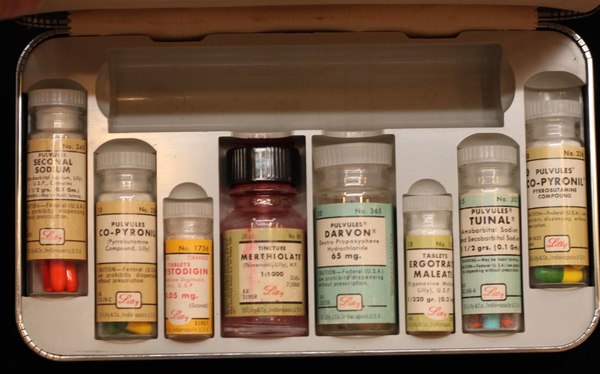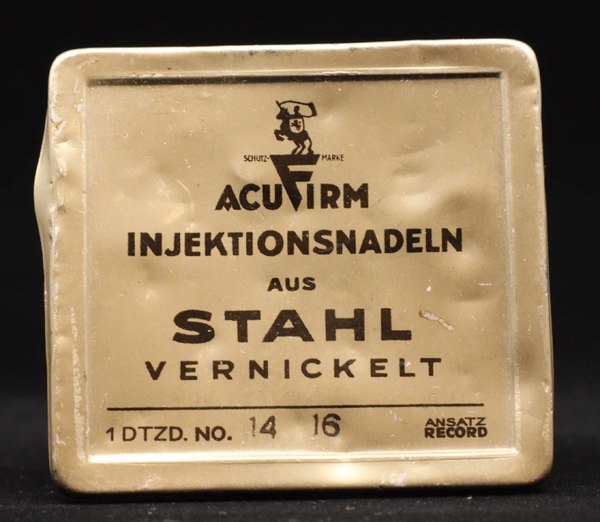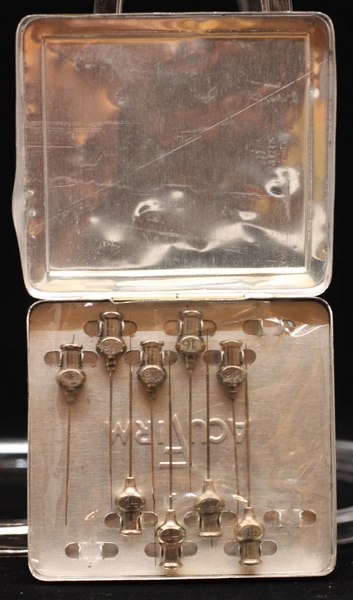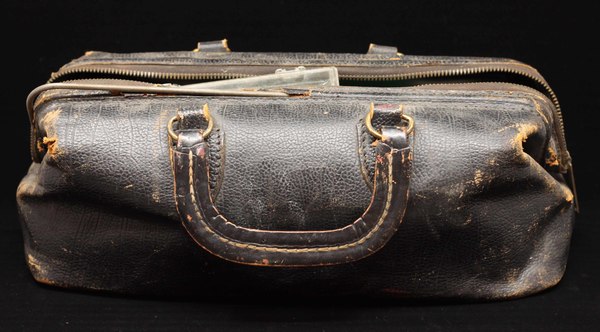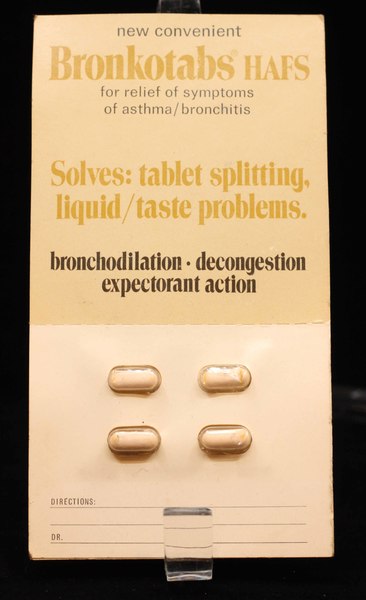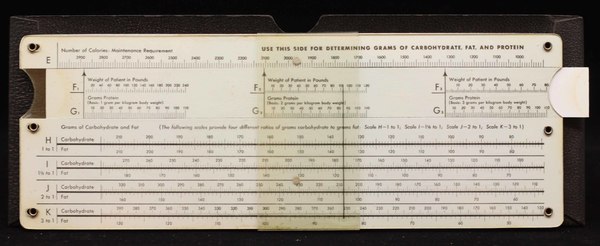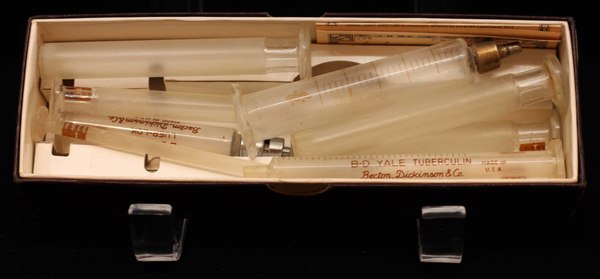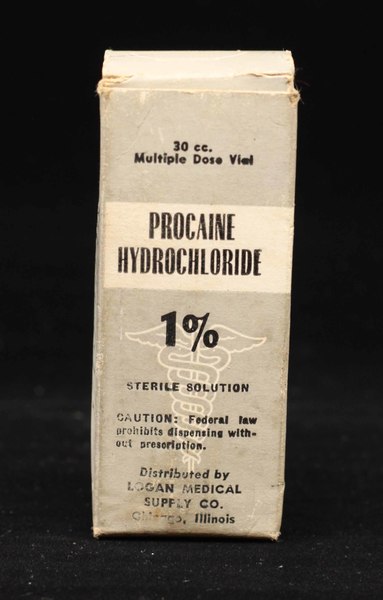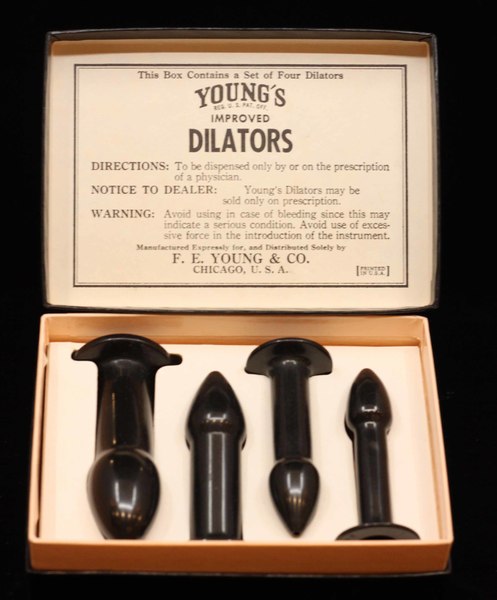Medical Implements
Part of the Stritch School of Medicine Collection includes prescription medication and instruments used by physicians in the 1940s. Below are some examples of the items that doctors kept in their professional bags.
Pollen Allergy Pamphlet
This Pollen Allergy pamphlet explains causes and symptoms of pollen allergies, as well as regional variants in pollen. Physicians consulted this pamphlet in the 1930s as a way to understand and diagnose seasonal allergies.
Eli Lilly Prescription Pills
This box, manufactured by Eli Lilly and Company, contains a variety of prescription pills. Seconal Sodium treated insomnia, Co-Pyronil acted as an antihistamine, Darvon treated mild pain and slight coughs, and Tuinal had sedative-hypnotic properties.
Physician's Medical Bag
Physicians in the 1930s and 1940s made home visits to their patients. The bag pictured above, owned by Alvin F. Batie, M.D., is an example of what a doctor might carry to these visits.
Asthma Pills
Bronkotabs first emerged in the pharmaceutical market around 1960. The pills were prescribed as a fast-acting way to help asthmatic patients open their airways.
Diabetic Slide Rule
Diabetic patients used this type of slide rule to determine caloric intake for their diets. Patients would slide the rule according to their height and weight to find the proper amount of calories listed on the opposite side.
Glass Syringes
Until 1955 when plastic disposable syringes were introduced, physicians used glass syringes. This box contains glass syringes in a variety of sizes.
Surgical Tongs
Dr. Batie's medical bag contained this pair of surgical tongs that could have been used for procedures.
Sterile Solution
Procaine Hydrochloride is a local anesthetic with a short duration. In the 1940s, the solution was likely used for quick procedures that only require numbness of skin.
Young's Dilators
While these dilators might seem shocking as medical instruments today, they were commonplace in the 1930s as a prescribed method to treat constipation.
